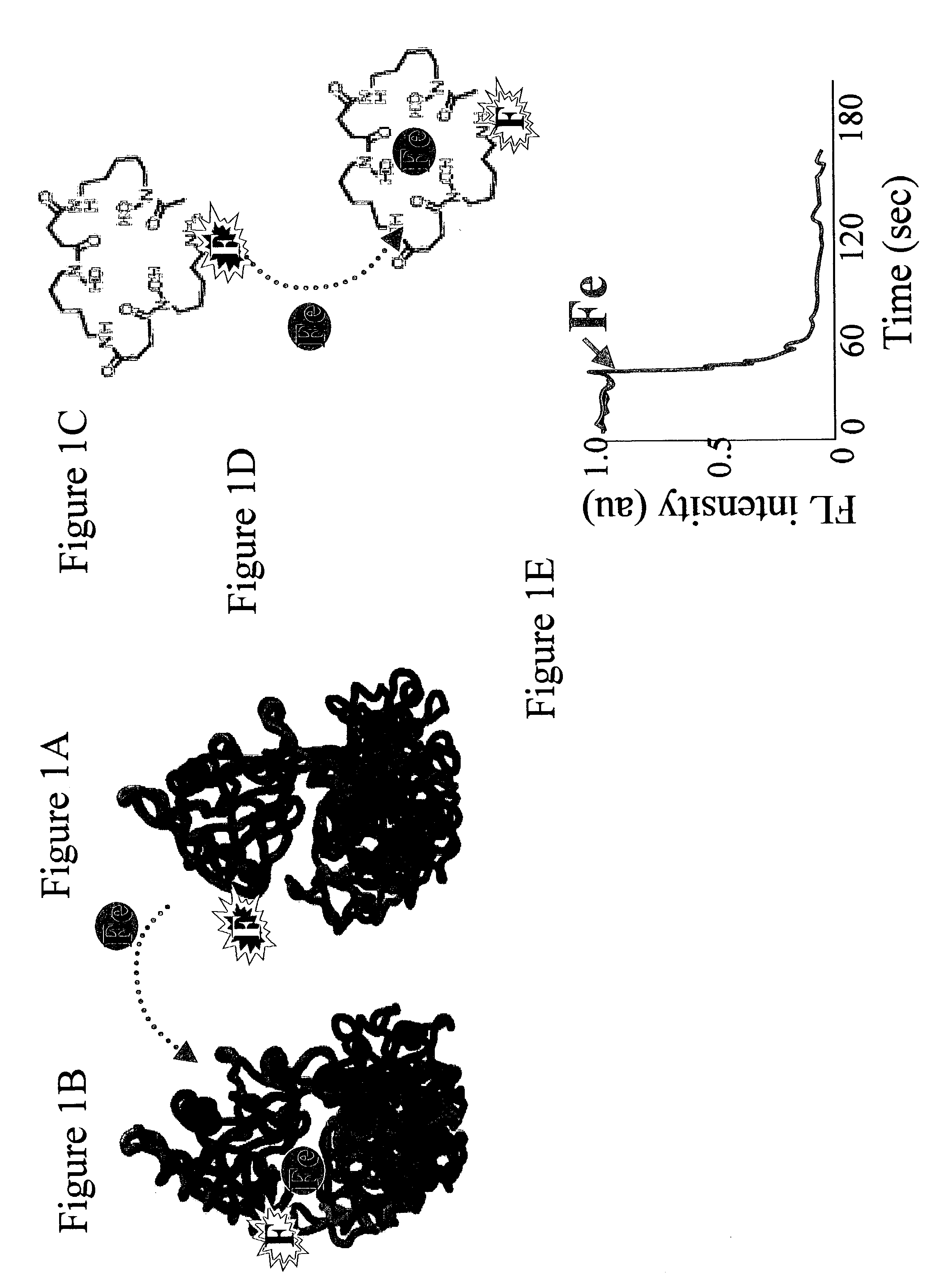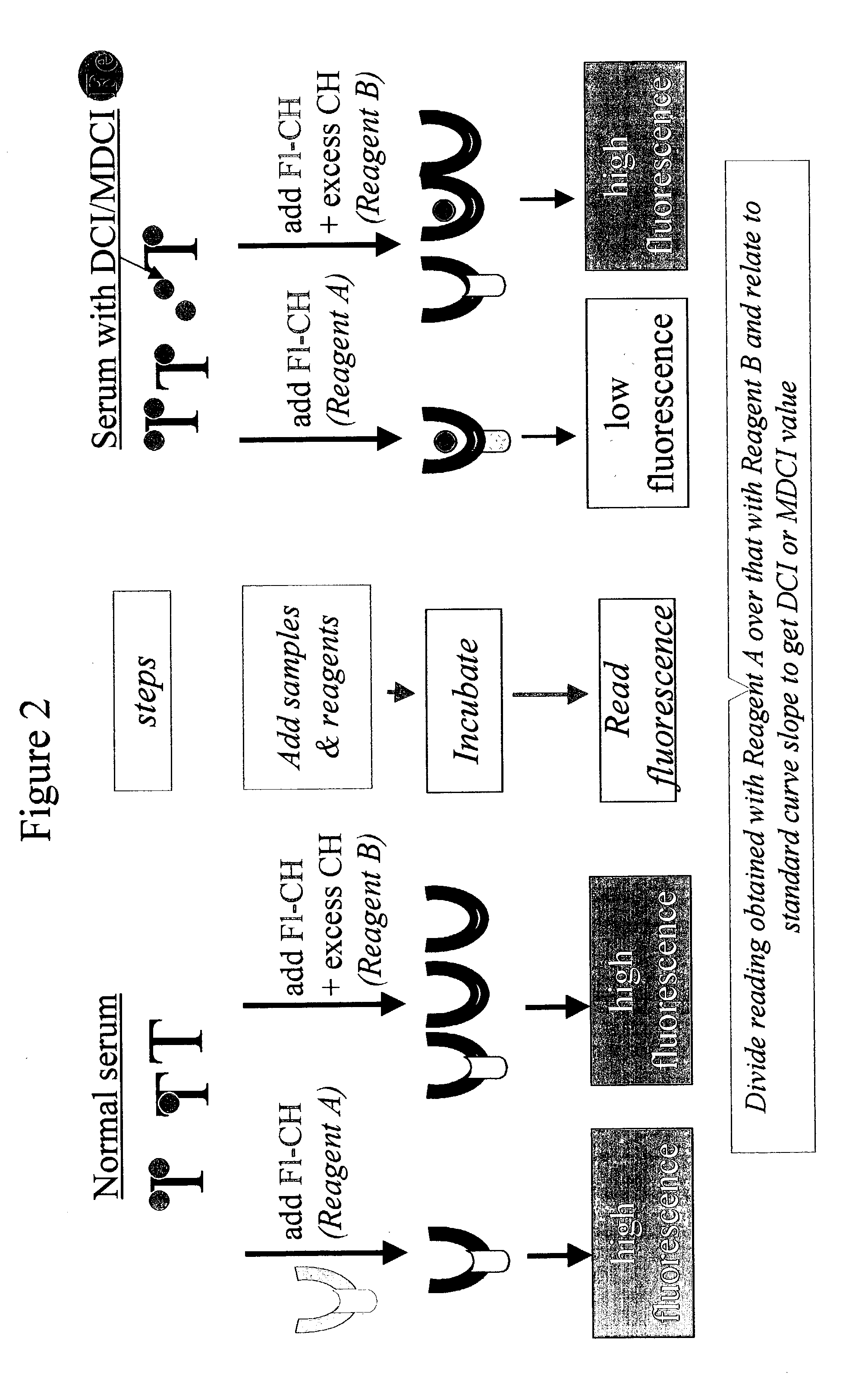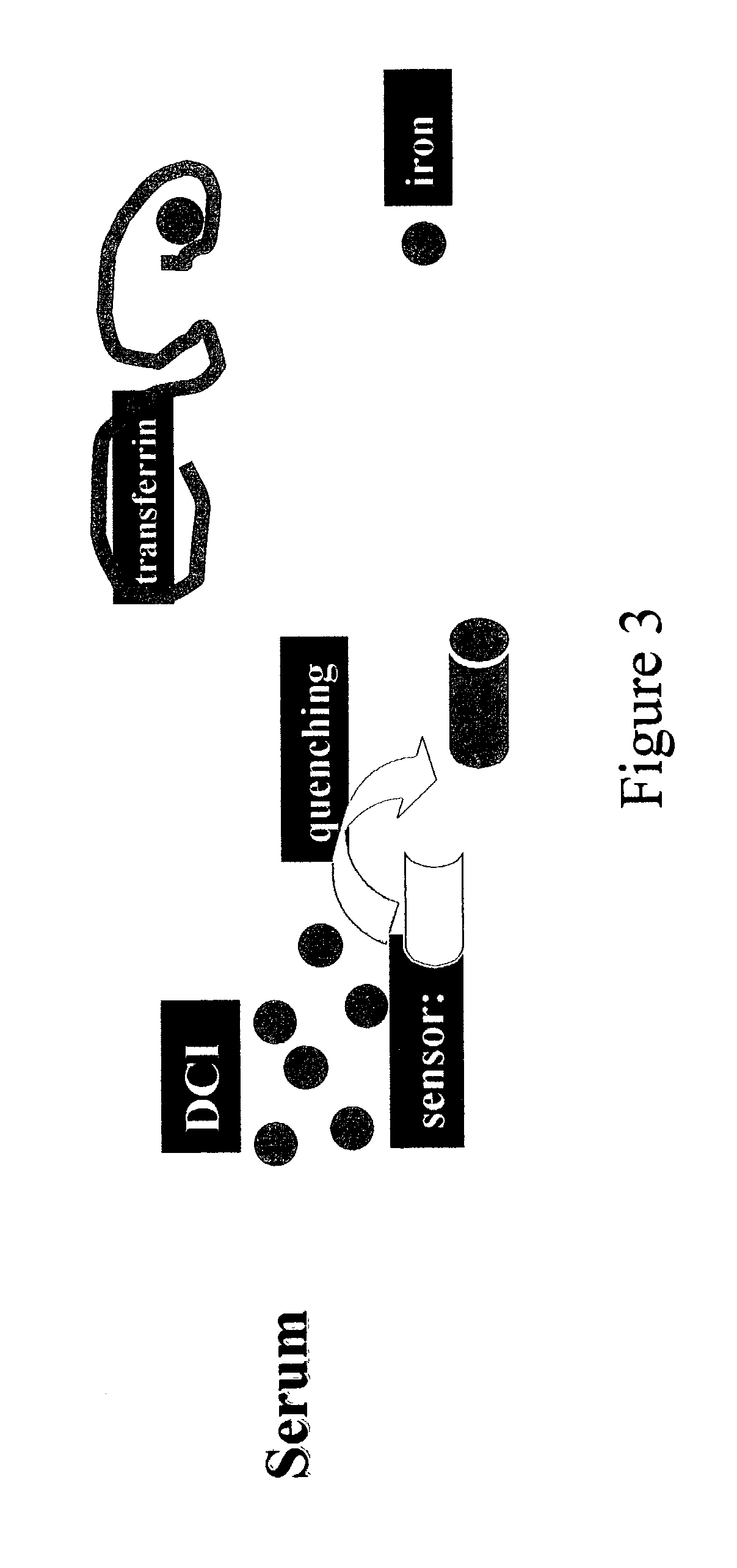Molecules and methods using same for measuring non-transferrin bound iron
- Summary
- Abstract
- Description
- Claims
- Application Information
AI Technical Summary
Problems solved by technology
Method used
Image
Examples
example 1
An Assay System to Detect NTBI as DCI and MDCI
[0193] Fundamental problems in the accurate measurement of non-transferrin-bound iron (NTBI) using current methodology include the complexity, poor efficiency and hence high cost of the assay systems currently in use. Because current detection methods for non-transferrin-bound iron (NTBI) are sub-optimal, it was essential to design a more accurate assay system, with higher throughput efficiency and greater applicability in clinical settings.
[0194] While reducing the present invention to practice, a novel assay which depends on the construction of a metalosensor for detecting iron was developed. The metalosensor or iron detector is based on an iron binding moiety (i.e., iron chelating moiety, CH) and a signal generating moiety (i.e., reporter group, F) that senses the chelator-bound iron (see FIGS. 1A-D). The basic feature of the method is that the binding of the metal to the CH, and hence the change in the spectroscopic properties of F, ...
example 2
Determination of DCI (Directly-Chelatable Iron) in Serum with FL-DFO
[0200] In order to demonstrate the versatility of the assay of the present invention, the fluorescent chelator FL-DFO, an analogue of DFO, was used to determine the directly chelatable iron (i.e., concentration of iron that is directly accessible to an iron chelator in a body fluid, DCI). The method is essentially as described for Example 1 hereinabove, and depicted schematically in FIG. 3. Note that with the designated assay conditions, no iron is chelated by FL-DFO from Tf (FIG. 3) In this DCI assay there are no agents added for mobilizing NTBI or for blocking apo-Tf in the serum sample, since Tf is mostly iron-saturated.
[0201] In order to determine assay sensitivity and provide a reference curve for the extrapolation of test results, the assay described in Example 1 was conducted on serial dilutions of known concentrations of Iron (FIG. 4).
[0202] Calibration curve generated showed fluorescence plateaus at an Iron...
example 3
Clinical Applications of DCI Assay
[0206] In order to determine the clinical applicability of the DCI assay, chelator binding of iron from human serum samples was assayed with samples representing a variety of iron-binding pathologies, treatment protocols and assay conditions.
[0207] Assay of Desferrioxamine-chelatable Iron in Normal and Iron-Overloaded Serum--The application of the DCI assay to populations of patients with various chronic diseases of iron overload is given in Table 2, below.
2TABLE 2 DCI (+) Average of Total Samples DCI (+) Range of DCI (+) Group Number (%) (.mu.M) (.mu.M) Thalassemia 16 91 4.9 1.7-8.6 major (TL)* Thalassemia 11 69 5.3 1.5-6.9 major (IL)* HHC (Portugal).sctn. 30 9 0.6 0.4-1.1 HHC (NL) 9 0 -- --Controls.sctn..sctn. 48 0 -- --Table 2 legend -TL-Thailand; IL-Israel; NL-Netherlands; HHC-hereditary Hemachromatosis; * - Sera from transfusional iron overload - predominantly .beta.-thalassemic children in Israel and non-transfusion dependent .beta.-EHb (varia...
PUM
| Property | Measurement | Unit |
|---|---|---|
| Length | aaaaa | aaaaa |
| Length | aaaaa | aaaaa |
| Length | aaaaa | aaaaa |
Abstract
Description
Claims
Application Information
 Login to View More
Login to View More - R&D
- Intellectual Property
- Life Sciences
- Materials
- Tech Scout
- Unparalleled Data Quality
- Higher Quality Content
- 60% Fewer Hallucinations
Browse by: Latest US Patents, China's latest patents, Technical Efficacy Thesaurus, Application Domain, Technology Topic, Popular Technical Reports.
© 2025 PatSnap. All rights reserved.Legal|Privacy policy|Modern Slavery Act Transparency Statement|Sitemap|About US| Contact US: help@patsnap.com



